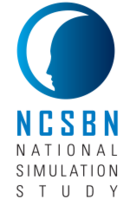National Simulation Guidelines for Prelicensure Nursing Programs
Scope and Purpose
Guideline Development
Definitions
The Guidelines
| Guidelines | Evidence | Resources |
|---|---|---|
| Guidelines
There is commitment on the part of the school for the simulation program. |
Evidence Letter of support from administrators stating the program has their support and will be given the resources to sustain the program on a long-term basis. Budgetary plan for sustainability and ongoing faculty training is in place.Written short-term and long-term objectives for integrating simulation into the undergraduate curriculum and evaluating the simulation program. | Resources |
| Guidelines
Program has appropriate facilities for conducting simulation Program has the educational and technological resources and equipment to meet the intended objectives |
Evidence A description describing the physical space for conducting simulations including the lab, storage/staging areas and a place for debriefing.Program has a plan that describes the simulation resources and equipment that will be used to achieve the objectives | Resources
Scenario Resources: |
| Guidelines
Lead faculty and sim lab personnel are qualified to conduct simulation |
Evidence Submission of CVs and evidence of qualifications such as: simulation conferences attended, coursework on simulation instruction, certification in simulation instruction, training by a consultant or targeted work with an experienced mentor | Resources  NLN Simulation Innovation Resource Center (SIRC) Courses NLN Simulation Innovation Resource Center (SIRC) Courses CHSE Certification Textbooks: (Jeffries (2007) Simulations in Nursing Education: From Conceptualization to Evaluation “Clinical Simulations: Advanced Concepts, Trends, and Possibilities. LWW and; Palaganas, J.C., Maxworthy, J.C., Epps, C. A., Mancini, M.E. (2015). Defining excellence in simulation programs. Wolters Kluwer CHSE Certification Textbooks: (Jeffries (2007) Simulations in Nursing Education: From Conceptualization to Evaluation “Clinical Simulations: Advanced Concepts, Trends, and Possibilities. LWW and; Palaganas, J.C., Maxworthy, J.C., Epps, C. A., Mancini, M.E. (2015). Defining excellence in simulation programs. Wolters Kluwer |
| Guidelines
Faculty are prepared to lead simulations |
Evidence | Resources See NCSBN Simulation Faculty Preparation Checklist |
| Guidelines
Program has an understanding of polices and processes that are a part of the simulation experience. |
Evidence Policies describing the following, include, but are not limited to: method of debriefing; plan for orienting faculty; qualifications of faculty and sim lab personnel; plan for training new faculty; evaluation methods. | Resources Socratic Method of DebriefingSee NCSBN Program Preparation Checklist INACSL Standards of Best Practice: Simulation INACSL Standards of Best Practice: Simulation |

